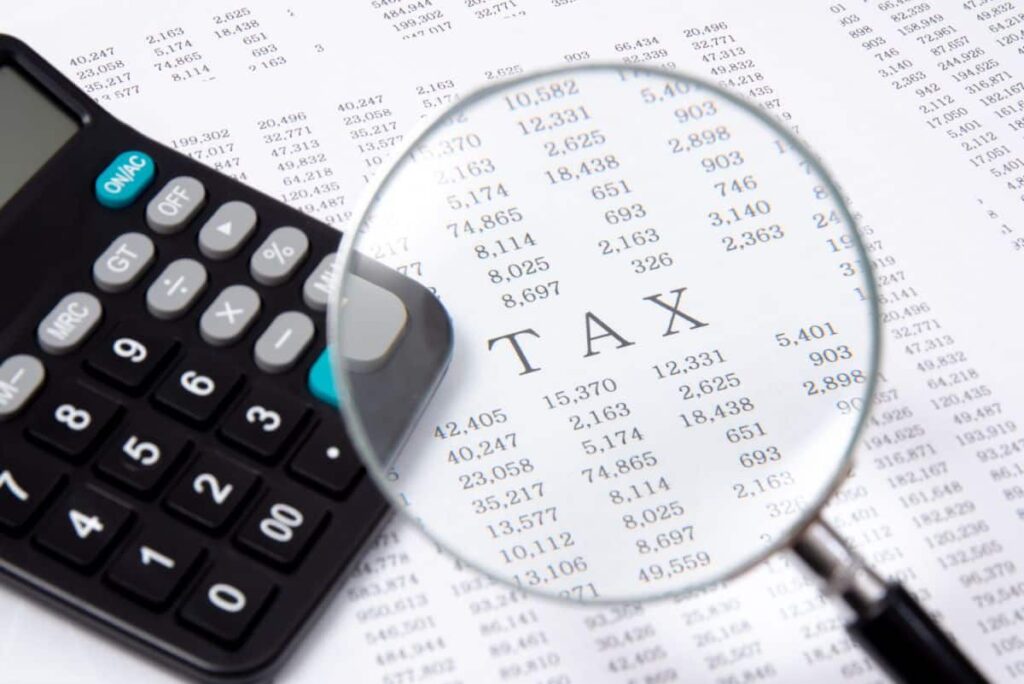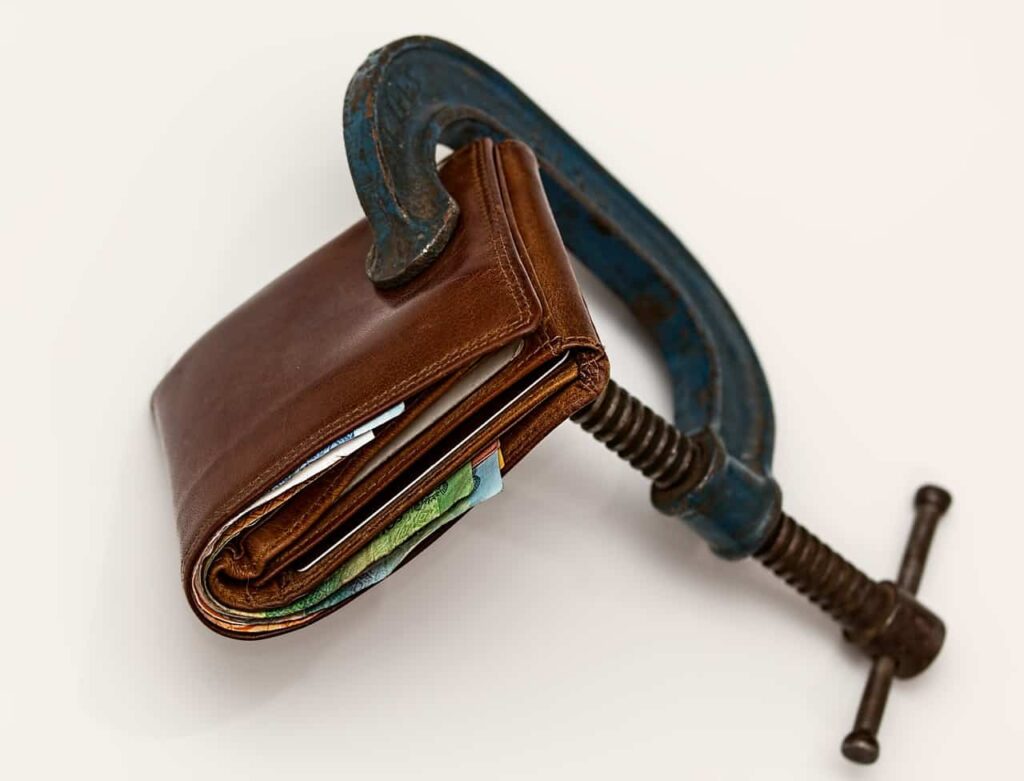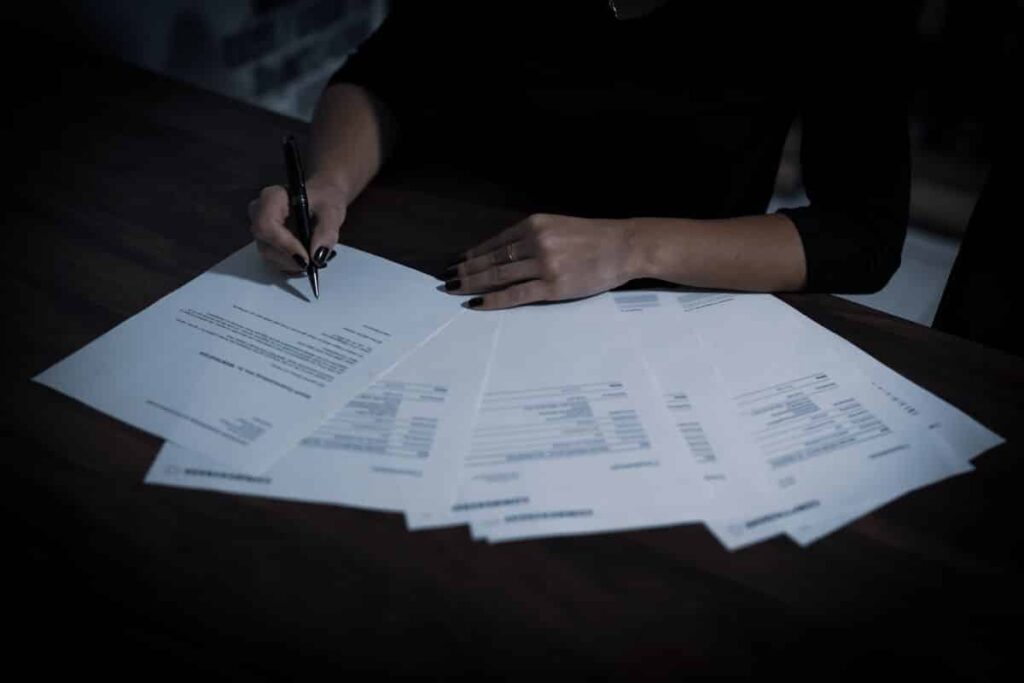Work-Related Clothing Tax Deductions
Are you curious about the tax deductions you can claim for work-related apparel purchases you made this year? The following is an explanation of the various categories of clothing that are normally tax deductible, as well as some advice on how to file your claim. It is important to keep in mind that the specific laws and exclusions that apply to your occupation may vary, thus it is recommended that you check with your accountant or tax counselor as often as possible.
Are you curious about whether or not you may deduct the cost of the clothes you wear to work on your taxes? The encouraging news is that you can, in most circumstances. However, in order to successfully claim a tax deduction for clothing, there are a few factors that you need to keep in mind. In this piece, we’ll discuss what kinds of clothing can be deducted from your taxes since they’re worn at work, as well as how to do so.
If you’re like the majority of people, when you think about tax deductions, you usually think of things like the money you save on clothes, food, and entertainment. You probably already knew this, but did you know that there are also a variety of tax deductions that you might be able to take for clothing that is relevant to your work? In today’s article for your favorite online publication, we’ll take a look at several of the most typical categories of tax breaks that pertain to attire worn at work. In addition to that, we will offer some advice on how you can take advantage of these deductions on your tax return. Continue reading this article if you want to learn how to cut costs and save some additional cash this year.
Do I Have the Right to Deduct the Cost of My Workclothes?
An employee has the ability to deduct, on their individual tax return, the costs associated with the purchase and repair of certain work-related uniforms, occupation-specific clothes, and protective apparel. Additionally, the expense of cleaning (including dry cleaning), drying, and ironing appropriate work attire is also able to be claimed as a deduction. The several types of work-related apparel each have their own set of deduction rules, which are explained in the following points:
Uniform
Mandatory Outfit Requirement
An obligatory uniform is a one-of-a-kind ensemble of garments that is designed to identify an individual as a member of a certain organization and that is worn in order to do so, for example, by police officers. In order for the expense of wearing a mandatory uniform to qualify as a deductible business expense, the uniform must be identifiable as belonging to your company (for example, by bearing the employer’s logo), it must be inaccessible to the general public, and your company must have a policy in place that requires you to wear the uniform while you are on the job. Despite the fact that your company might require you to wear plain uniforms or apparel like black pants, the expense of purchasing these items is not something that can be deducted from your income.
As an employee of an organization, you are expected to wear a uniform that clearly identifies you in some way. A uniform policy that is thoroughly enforced requires that employees be required to wear the uniform at all times while on the job. If this is the case with your attire, the cost of it may be tax-deductible. Examples of typical jobs that require employees to wear uniforms at all times are law enforcement officers, nurses, members of the armed forces, and employees of airlines and supermarkets.
If they are an essential component of a specialized mandatory uniform, footwear items such as shoes, socks, and stockings could potentially be claimed as a tax-deductible. Your employer’s policy on uniforms should specify their colour, style, and type, just as this is occasionally the case with flight attendants and nurses. It is also feasible to submit a claim for a single item of distinguishable clothing, such as a jumper, provided that the employee is required to wear it while performing their job duties.
Uniform That Is Not Required To Be Worn
If your employer gives you the freedom to pick what you wear to work, then a uniform can no longer be considered mandatory for you to wear. Therefore, any costs associated with a non-compulsory uniform are not eligible for a deduction under any circumstances, unless your company has registered the design of the uniform with AusIndustry.
If the uniform you wear is one of a kind and truly represents your organization, you might be able to argue that it should not be required of you. If an item of clothing was developed and manufactured specifically for your employer, then it is regarded as being one of a kind. The emblem of your company must be sewn onto your uniform in such a way that it cannot be removed, and the garments themselves must not be sold to the general public.
You are not allowed to deduct the cost of purchasing or cleaning a simple uniform that does not contain any logos, such as the standard black pants and white shirts that wait staff members wear. In order for employees to deduct the cost of optional work uniforms from their taxes, the design of the uniform must typically be registered with AusIndustry. Shoes, socks, and stockings are not regarded to be part of a non-compulsory work uniform, nor is a single item like a jumper considered to be part of a non-compulsory work uniform.
Clothing Tailored to a Particular Profession
Clothing costs that are necessary for work can be deducted from your total income. However, in order for an article of clothing to be considered “occupation-specific,” it must not be often worn, it must be unique to your occupation, and it must make it possible for the general public to recognize the occupation (for example, a nurse’s uniform).
Garments that offer protection
A deduction can be made for protective clothing that is worn in order to protect oneself from the danger of being ill or injured while working in a certain environment. Clothing that is resistant to fire, clothing that shields the wearer from the sun, high visibility safety vests, steel-capped boots, overalls, aprons, and other articles of clothing might be included in the category of protective clothing. The expense of personal protection equipment, such as hard hats and safety glasses, can also be deducted from your earnings. However, the expense of common clothes that protect you, such as conventional shoes with closed toes, are not eligible for a deduction because they are considered to be a basic necessity.
You are able to make a claim for the clothing and footwear that you wear to protect yourself from the risk of illness or injury that may arise from your income-earning activities or from the environment in which you are required to carry out these activities. You can make a claim for the clothing and footwear that you wear to protect yourself from the risk of illness or injury that may arise from your activities
In order for the products to be referred to as “protective,” they need to offer a level of defence against the risk that is adequate. Because of this, protective apparel consists of:
- garment that is flame-resistant and provides protection from the sun;
- Vests with increased visibility;
- shoes for nurses that are non-slip;
- Rubber boots for those who work with concrete;
- Heavy-duty shirts and pants, as well as boots with steel toe caps, gloves, and overalls;
- The overalls, smocks, and aprons that you put on before engaging in activities generate revenue to protect the garments you normally wear from being dirty or damaged.

Normal clothing, such as jeans, drill shirts, work shorts, trousers, socks, and shoes with closed toes, is not considered protective gear if it does not have any protective properties that are designed for the dangers associated with your employment.
In general, claims for the expense of purchasing or cleaning ordinary garments that are worn for work and that may also help to protect the wearer are not permitted by the ATO. As an illustration, you are not allowed to make a claim for regular, closed shoes, despite the fact that they will protect your toes and feet if you wear them.
Expenses Relating to Laundry and Dry Cleaning
Imagine that you have already purchased one of the work clothing that is eligible for this promotion. If this is the case, you have the legal right to submit a claim for a deduction for the cost of your laundry services, which includes the cost of washing, drying, and ironing work-related clothing. You are not required to provide written documentation if you are claiming laundry expenditures of up to $150; nonetheless, the amount must be assessed properly. If you are claiming these expenses, the total must be reasonable.
The Australian Taxation Office believes that a suitable foundation for estimating laundry expenses is one dollar per load for qualified work-related apparel and fifty cents per load if other laundry items are also included in the load. In addition, you need to have work-related expenses totalling at least $300 and written evidence that needs to be retained for a period of five years in order to claim expenses linked to dry cleaning.
It is possible to submit a claim for reimbursement of expenses incurred in the laundering, drying, ironing, and dry cleaning of appropriate work attire. However, you are required to keep written evidence for your laundry expenses, such as diary entries and receipts, if the amount of your claim for work-related expenses is larger than $150 and your total claim for work-related expenses is greater than $300.
Instead, you can calculate the cost of your laundry claim based on the following numbers, which the ATO will allow you to use if you do the washing, drying, and ironing yourself:
- $1 per load (this includes washing, drying, and ironing), with the condition that the load only contains apparel connected to the employee’s work;
- If other laundry products are added, each load will cost an additional fifty cents.
It is possible to make a claim for laundry services as well as additional services such as drying, ironing, and dry cleaning. However, you are only permitted to claim work clothing that meet the criteria for eligibility. In addition to this, there ought to be documented evidence to show that you used a laundry service for your work gear. A journal entry or a receipt are both viable options for this kind of documentation.
Take note, however, that in order to claim reimbursement for laundry charges, your total claim must be more than $150. In addition, the total amount of your claim for work clothing is higher than $300.
Now, let’s say you’ve made the decision to wash, dry, and iron your own clothes. Does it mean you cannot claim deductions? The good news is that you qualify for a number of tax deductions and exemptions. For the purpose of assessing how much of a deduction you are eligible to receive for a do-it-yourself laundering, you can apply the following calculations, as recommended by the ATO:
- When you wash, dry, and iron work-related apparel, you will earn $1 for each load;
- If you include other products that are not directly relevant to your job, you will receive an additional fifty cents for each load.
In some fields of labour, calculating the number of tax deductions that can be claimed for work clothes and other associated costs might be a bit of a challenge. For instance, registered nurses are often eligible to get reimbursement for the cost of purchasing and laundering their uniforms, as well as for the cost of non-slip shoes, stockings, socks, and ties. However, these articles of clothing should first be seen as mandatory and considered an essential part of their outfit when they are at work.
If you are a nurse, you have the ability to claim a tax deduction for clothing that is required for your employment. This may include clothing that cannot be regarded to be of the ordinary variety. When you go out in public, the clothes you wear should quickly communicate to other people that you are a nurse.
In most cases, medical professionals such as nurses, doctors, and other healthcare workers wear uniforms that are easily recognizable. But what about those individuals who choose not to dress in uniform? For instance, if you are a professional driver, you most likely dress in a manner that is considered standard. Despite the fact that your company may instruct you to wear a particular shade of polo shirt or even formal attire, purchases of this kind of clothes are not eligible for a tax deduction.
Nevertheless, this does not exclude you from submitting a claim for any costs associated with the workwear you wore. For instance, if the clothing you are required to wear qualifies as a mandatory uniform, you may be able to deduct the expense of purchasing it. You should be able to identify yourself as a member of a specific organization by wearing this uniform. Therefore, even if you wear jackets, jumpers, jeans, or shirts, you could still be able to claim a deduction for the cost of doing so.
If you have a job as a driver, you may be able to deduct some of the following expenses from your income:
- Accessories for protection from the sun, such as hats, sunglasses, sunblock, and garments with built-in sun protection;
- Other pieces of safety gear that were not provided for you by your employers, such as gloves, goggles, steel-capped boots, winter jackets, and masks;
- Expenses on stationery and diaries;
- Bags for the office or briefcases.
What You Believe You Know About Deducting the Cost of Work Clothing from Your Taxes Is Incorrect!
When it comes to claiming tax deductions for their uniform expenses, the Australian Taxation Office has issued a warning to business owners and employees this week to get with the program and get on board with claiming such deductions.
The number of requests for deductions related to washing and uniforms has increased by approximately 20 percent over the past five years. Because of this, the ATO has taken notice of the situation. The assistant commissioner of the ATO, Kath Anderson, has declared that the views that a significant number of taxpayers have regarding claiming clothes deductions are incorrect. She referred to these taxpayers as “confused” and attempted to clarify and remind them that the only deductions that can be claimed are for apparel that is unique to the taxpayer’s employment.
When it comes to claiming to clothing, there are specific standards that can be followed by business owners, employees, and self-employed individuals. As an illustration, Anderson stated that “You need to have spent the money yourself and can’t have been reimbursed, two – the claim must be directly related to earning your income, and three – you need a record to prove it.” In this case, “you need to have spent the money yourself and can’t have been reimbursed.”
In November of 2016, the government issued a discussion paper in response to the growing interest in this topic over the course of the past year. It was suggested that any and all work uniforms that were not obligatory should be taken off the list of items that may be claimed for tax deductions. This would include the uniforms that are worn by nurses and other people who work in healthcare.
Then, about two weeks ago, the Commissioner of the ATO, Chris Jordan, questioned the magnitude of deductions for working uniforms. In the 2014-2015 fiscal year, these deductions totalled $1.6 billion. For the purposes of calculating this number, we will assume that fifty per cent of the population of Australian taxpayers are employed in positions that require them to purchase items such as protective clothing or a uniform.
There is no question that the ATO is keeping a close eye on claims regarding uniforms and washing, so let’s make it plain what you may and cannot claim in this regard.
You Must Have Evidence
The ATO has made it abundantly apparent that you should be able to offer supporting proof on the following topics if requested:
- How your costs for cleaning your clothes were determined;
- Why is it necessary for you to dress a certain way when you go to work;
- Explain how you arrived at the total amount of your claim.
The expenditure claim for the $150 allowance for clothing and laundry has come under the most scrutiny during the course of the most recent fiscal year. The requirements for record-keeping for this category of deduction are, in general, more flexible than for other categories; however, the attention of the ATO has been drawn to an unusual circumstance.
A total of over 1.6 million taxpayers are claiming the same exact deduction of $150.
“We expect many of these claims to be valid, but the results of our random audits demonstrate that people are making mistakes,” said ATO Assistant Commissioner Kath Anderson. Therefore, persons who make this claim during this fiscal year can anticipate the Tax Office to ask them to provide evidence if they want their claim to be accepted.
Have you been provided with a laundry allowance by your place of employment?
If you were given money by your employer to cover the cost of washing, you are required to include this money as part of your income on your tax return because it is deemed to be income.
Even if you have been given an allowance, you are still eligible to file for a deduction; however, it is imperative that you file for a deduction for the amount that corresponds to the amount that you really spent, and not the amount that corresponds to the amount that your allowance was.
Therefore, if your allowance for the year was $200, but the total amount you spent on uniforms and laundry was only $150, you would only be able to claim $150 of that allowance. On the other hand, if your allowance for the year was just $200, but your expenses were $250, you would be eligible to receive the full $250.
Are Sunglasses And Sunscreen Tax Deductible?

There is no straightforward response to this question because the answer is contingent on the line of work that you are in. In a few words, it is determined by the work that you do. For instance, if the majority of your work takes place outside (such as being a driver, as in the previous illustration), you may be eligible to deduct the cost of sun protection items such as sunglasses, sun hats, sunscreen, and any other relevant personal protective equipment.
On the other hand, if the only thing you do to protect yourself from the sun is put on sunscreen, then it’s possible that you won’t be able to take a deduction for it. Though you do not have a job that requires you to work outside, then you are not eligible to claim a tax deduction for sun damage, even if you were out in the hot sun virtually every day while you were on the job.
Do You Have To Provide Proof In Order To Claim?
If this is not your first time claiming tax deductions, you probably already know that there are certain purchases for which you do not need to provide evidence, such as receipts or diary entries. Nevertheless, evidence is required for workwear expenses and claims in order to facilitate an easier and more expedient process. The ATO has made it quite apparent that if they make a request, you may be required to furnish supporting proof. You will almost always be required to provide evidence that:
- Why you select to compute the cost of doing your clothes in the manner that you did;
- Why do you choose to dress a certain way when you go to work?
- How you arrive at the final value for the claim in its entirety;
- You would not be permitted to file a claim for reimbursement of these costs if your employer-provided you with a stipend that might be used toward the purchase of clothing, the repair of clothing, or the laundering of clothing. However, the Australian Taxation Office (ATO) mandates that you disclose on your tax return the amount that you receive as your allowance for those services.
Final Reminders
To successfully lodge a claim for work-related clothing expenses, you will need to follow specific instructions. To begin, you can deduct from your taxes only the costs of those articles of clothing that are directly connected to your line of work and to the production of your income. Second, the type of clothing you wear should be as industry-specific as is practicable given your job. If you claim a deduction for a chef’s hat, for instance, you will almost certainly be granted that deduction. You will not, however, be eligible for a tax break if you are claiming a deduction for any other hat that you wear on the way to work in addition to your work hat.
Another requirement is that you must have already used the money that you want to use to pay for the purchase out of your own pocket. Therefore, if your employer does not repay the costs associated with the workwear that you purchased, you are eligible to claim a tax deduction for those costs. And last but not least, you will need a record to back up your claims. You have the option of supplying either a receipt or a diary log as the documentation that thoroughly describes how you arrived at your conclusion regarding the calculation.


















